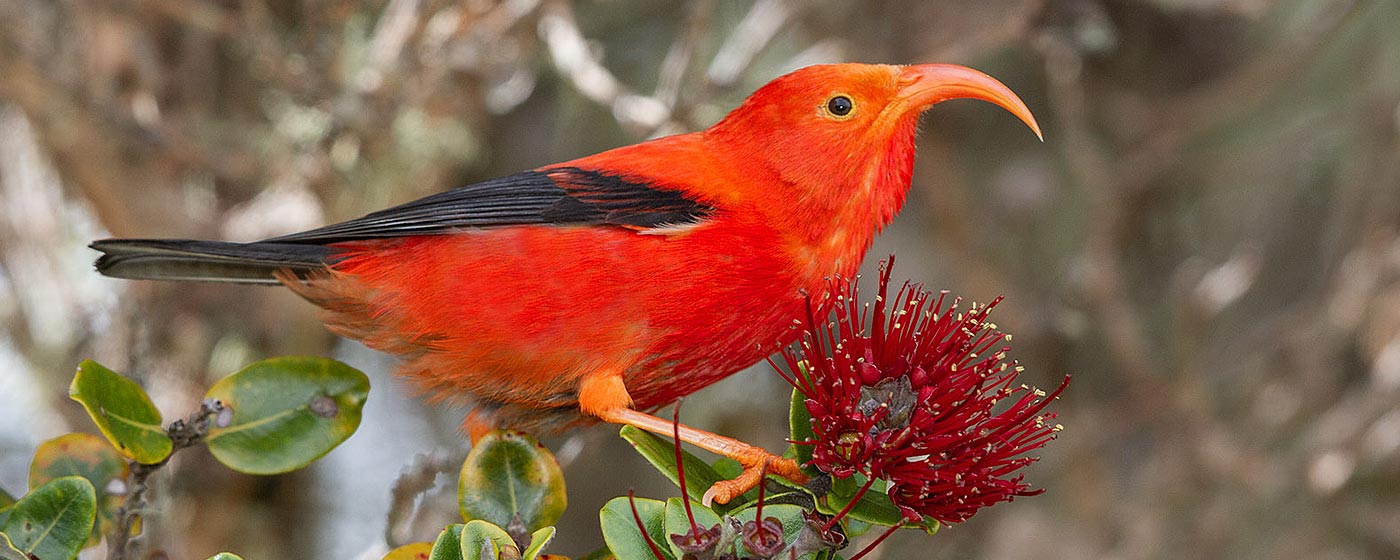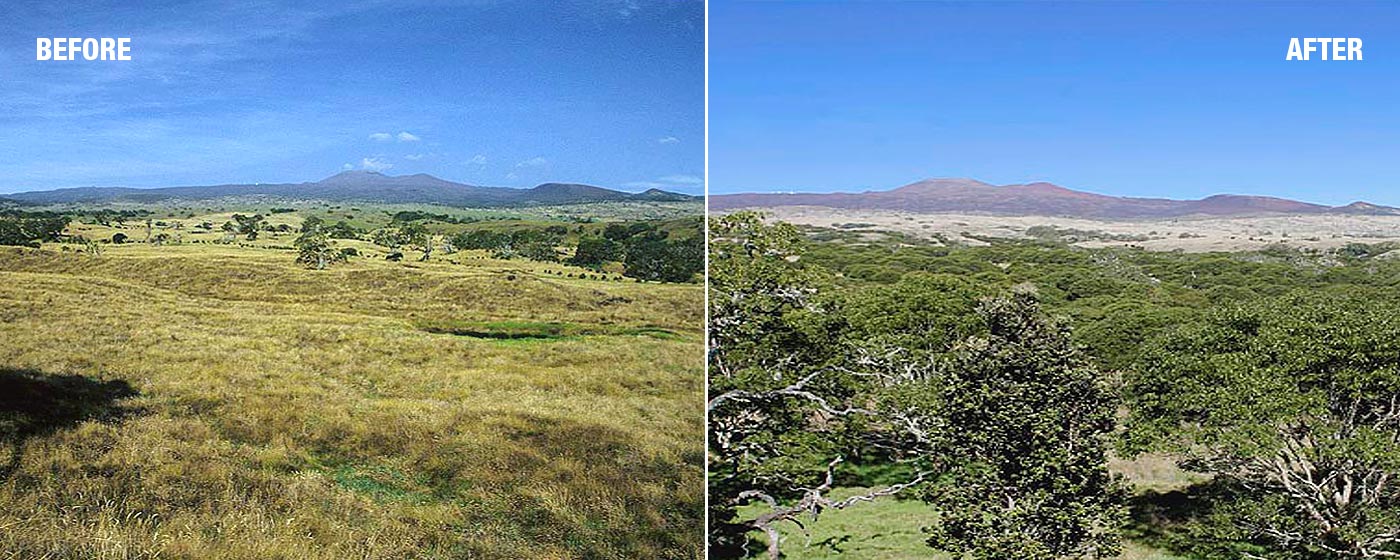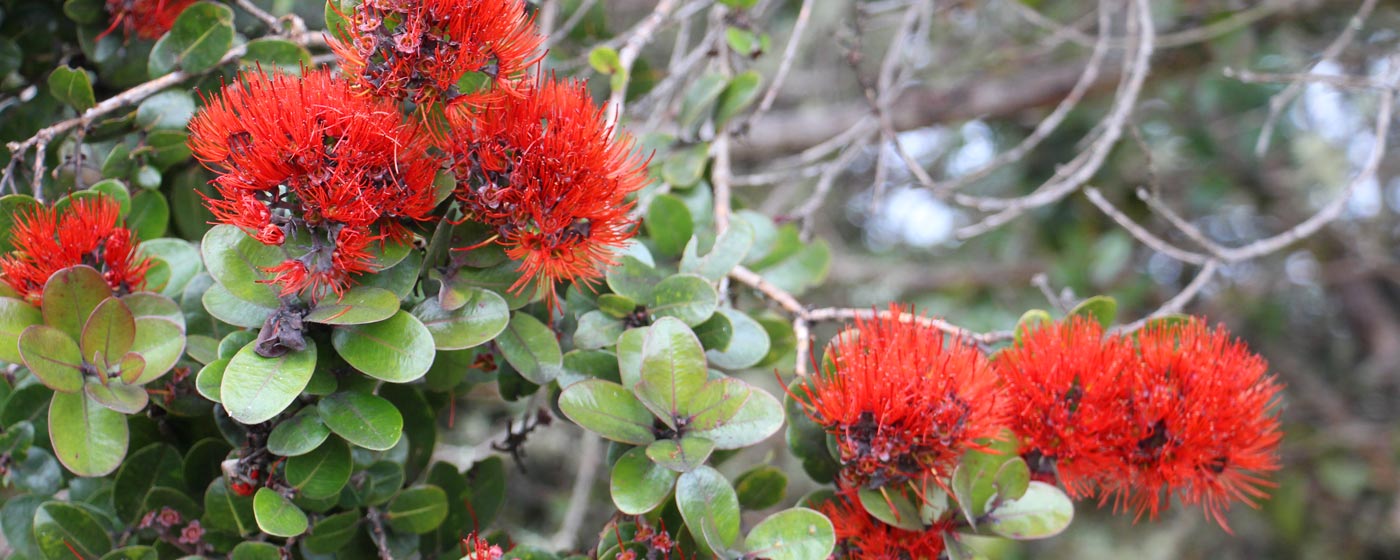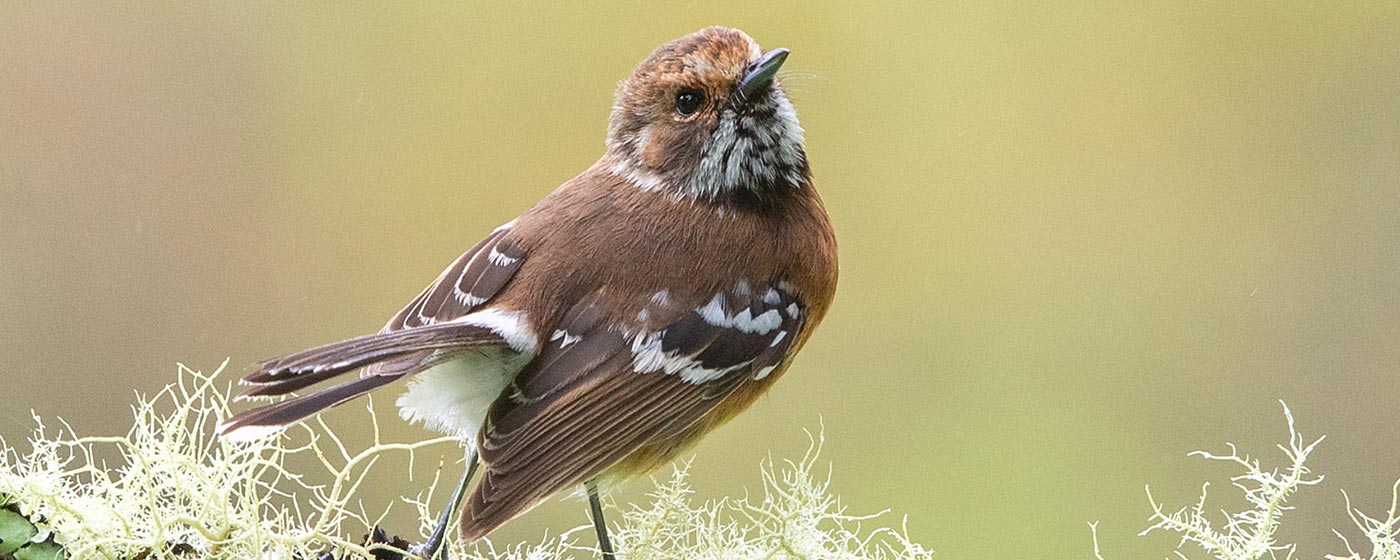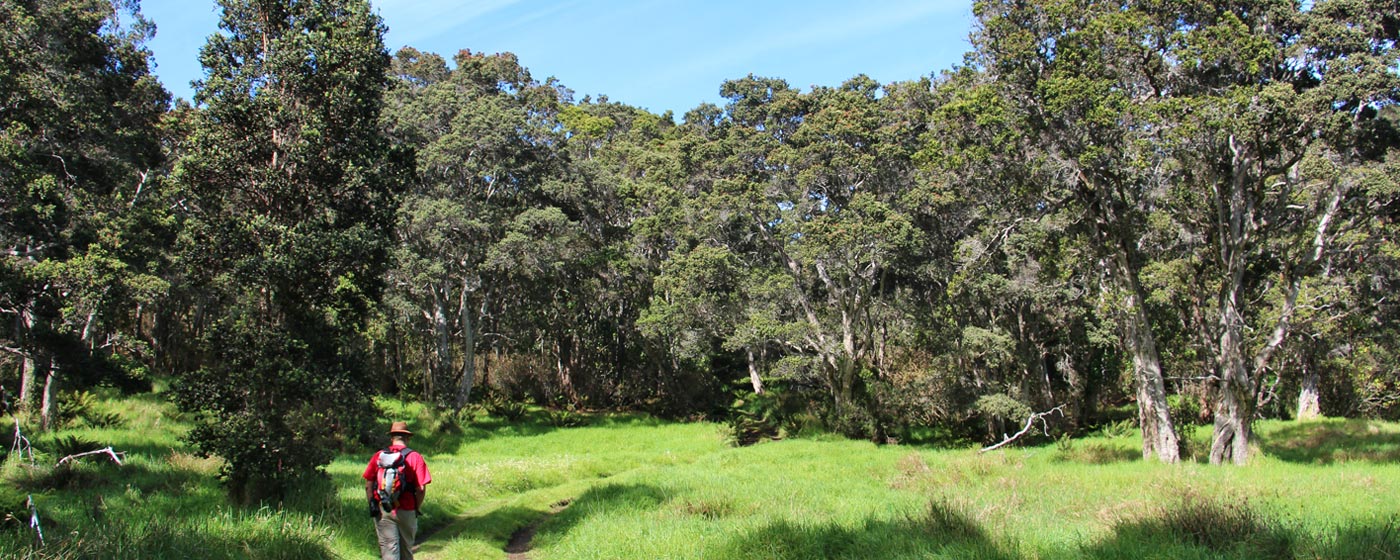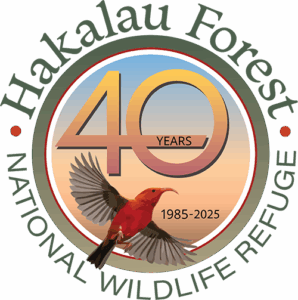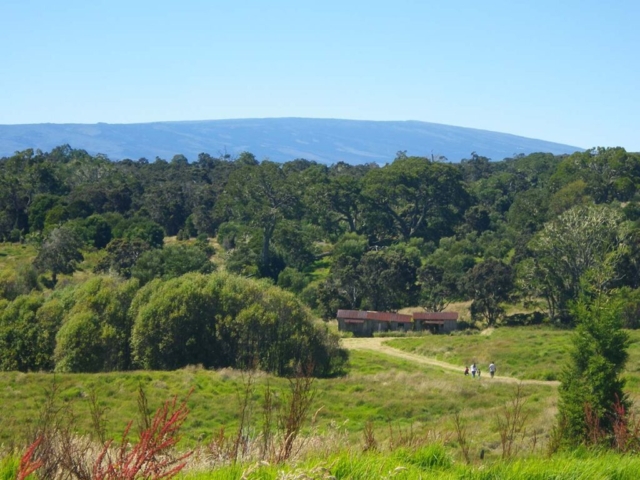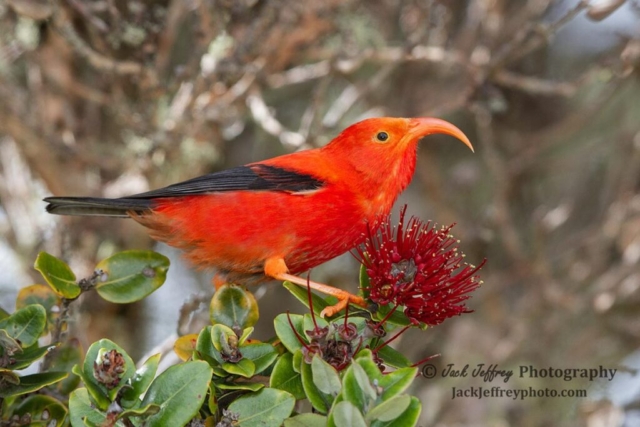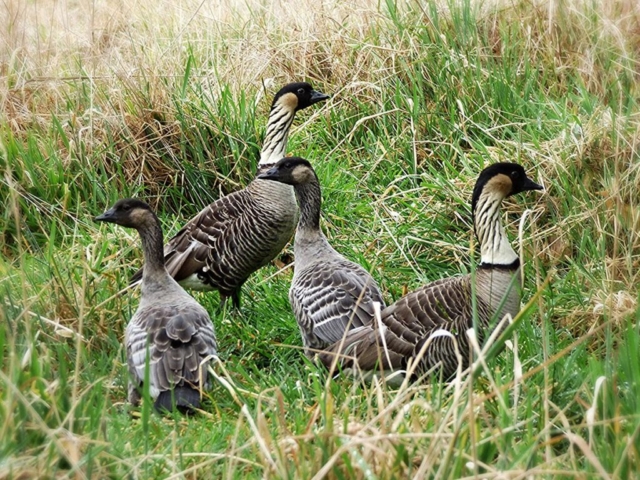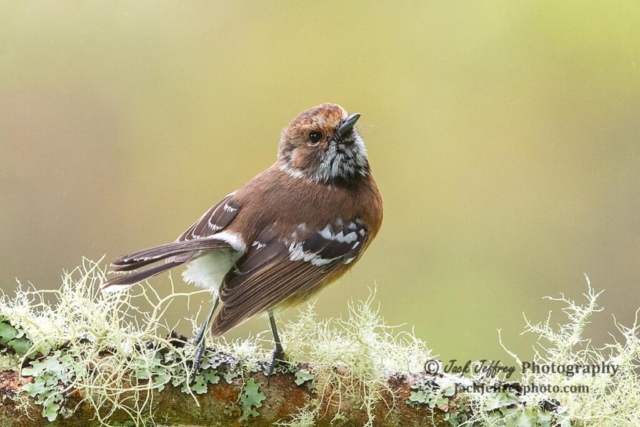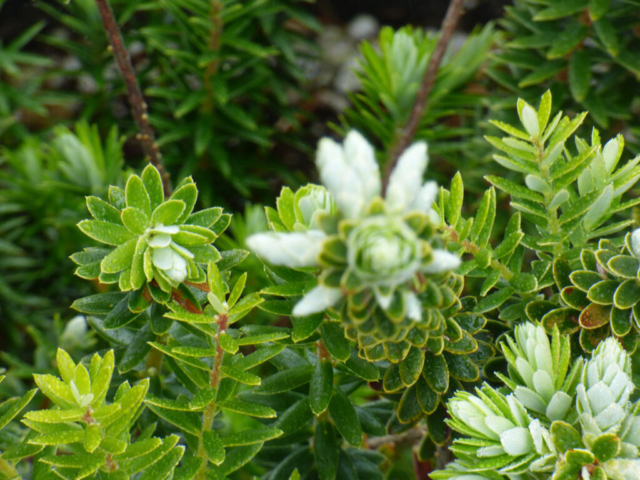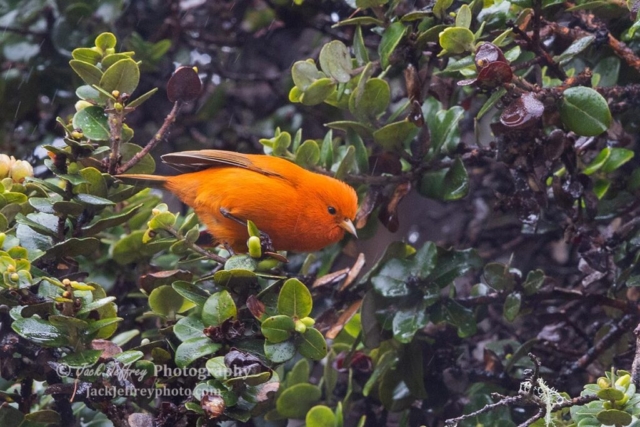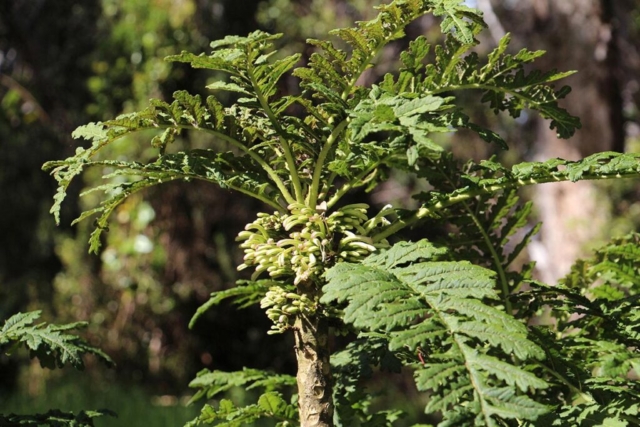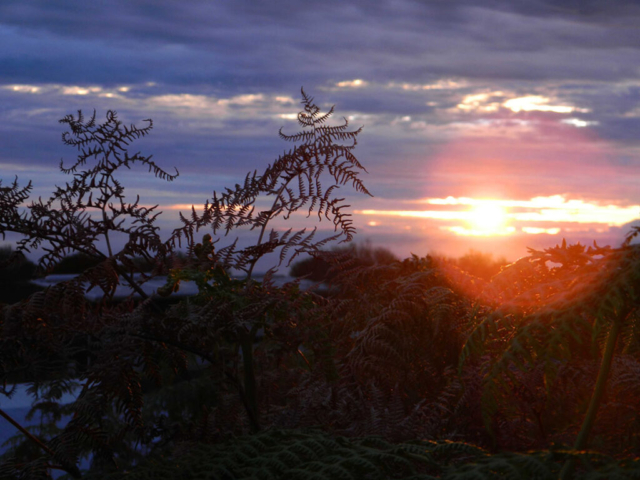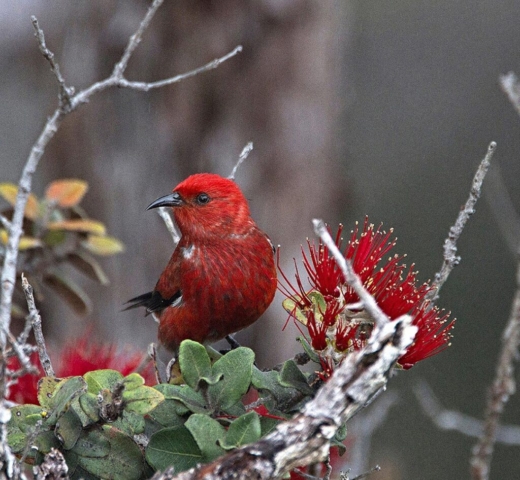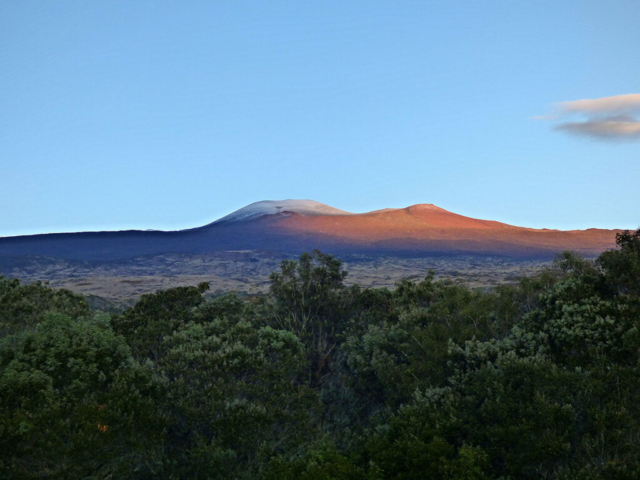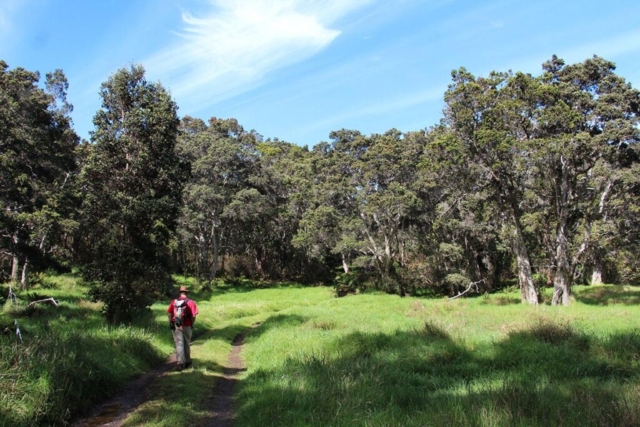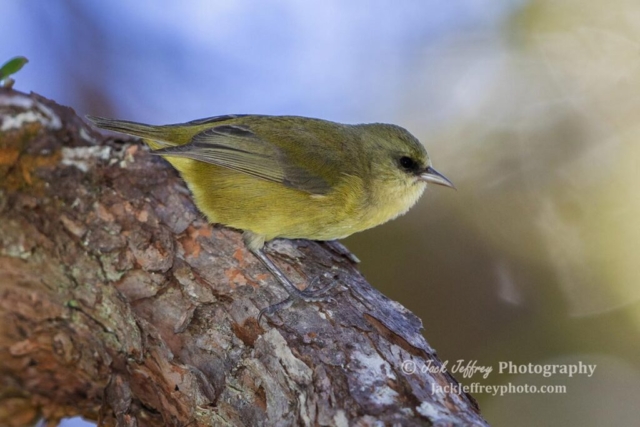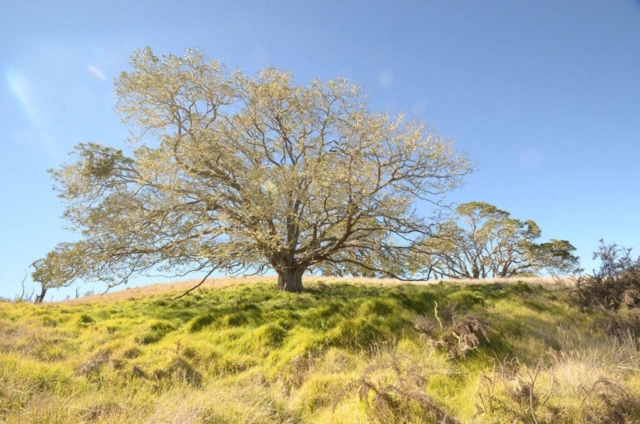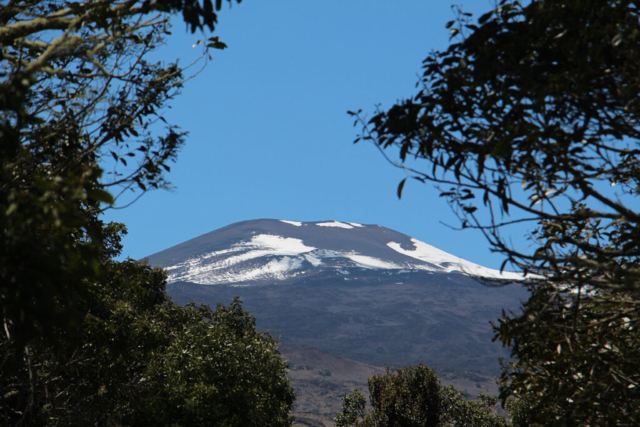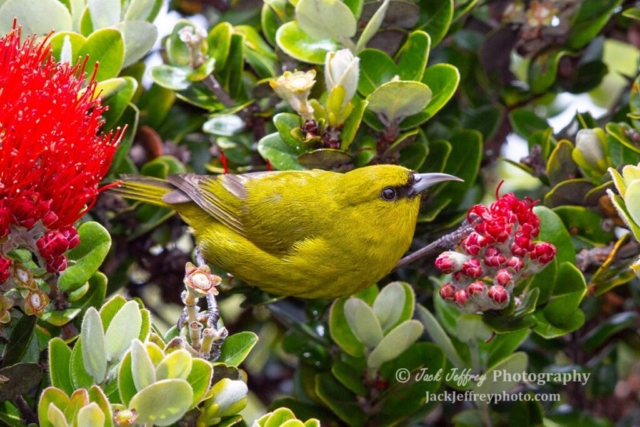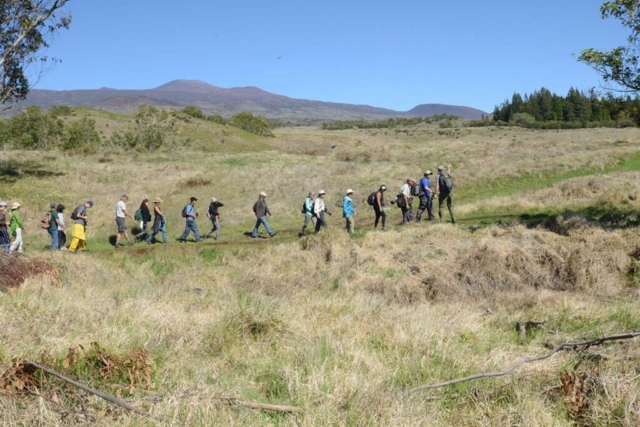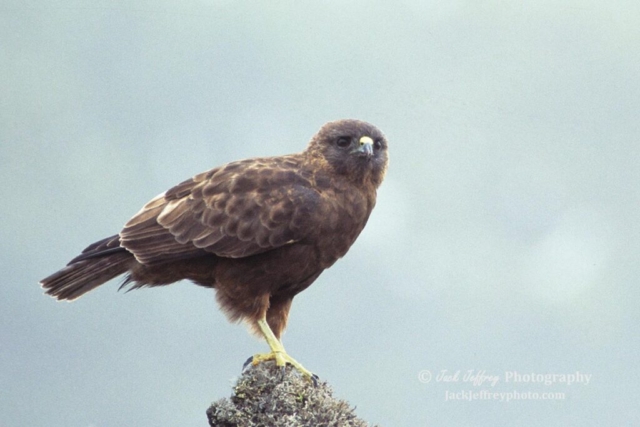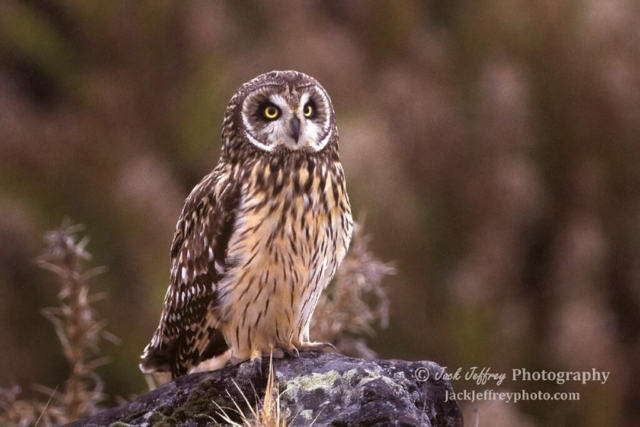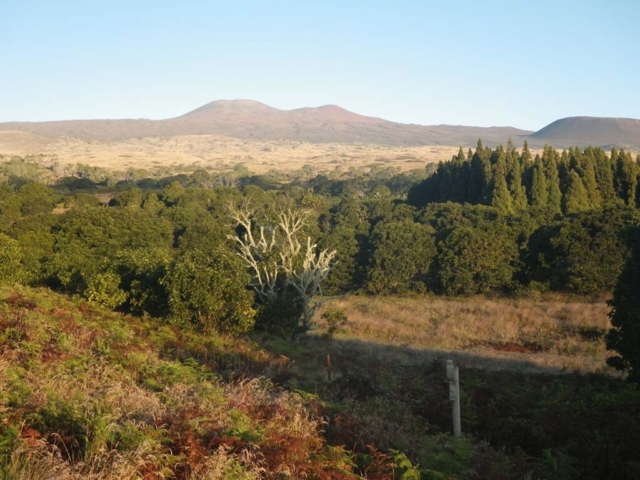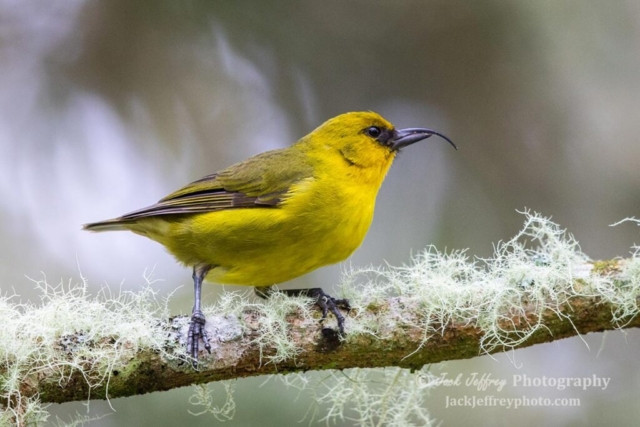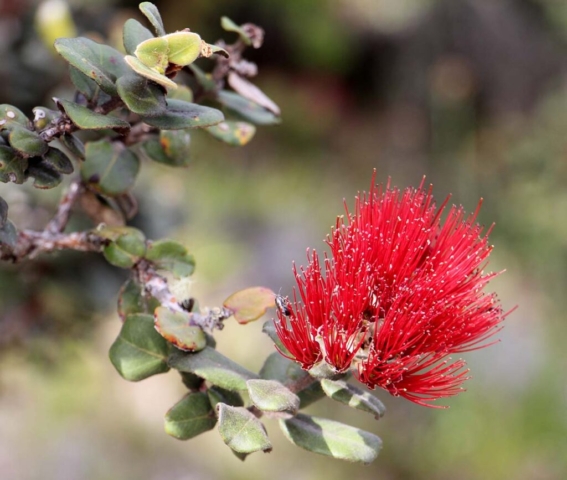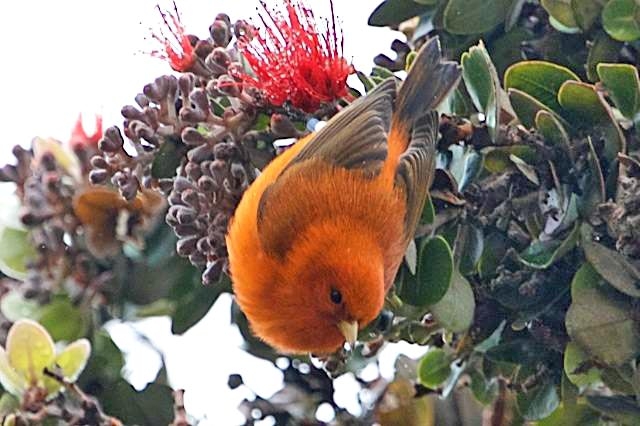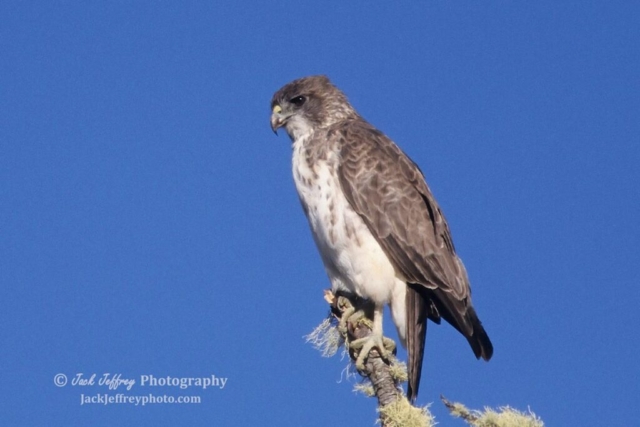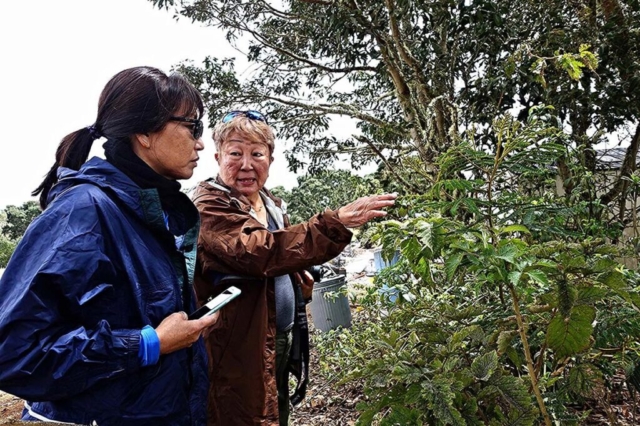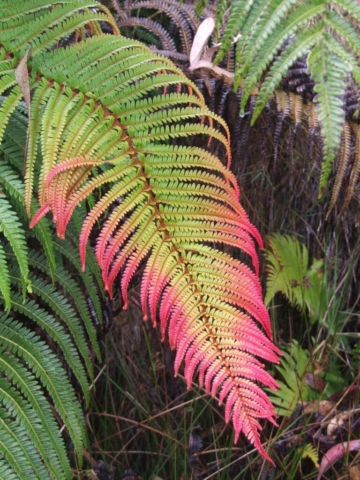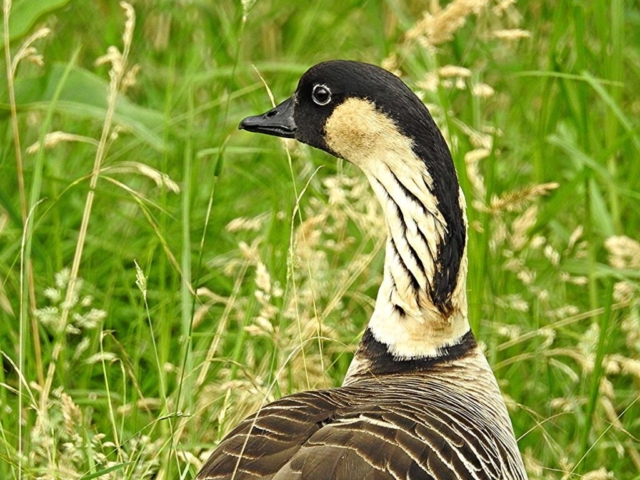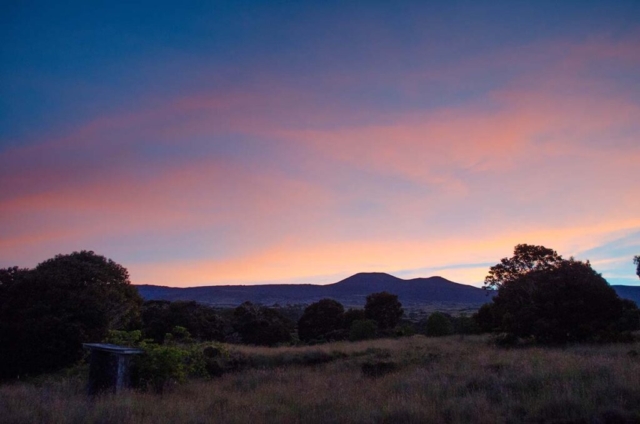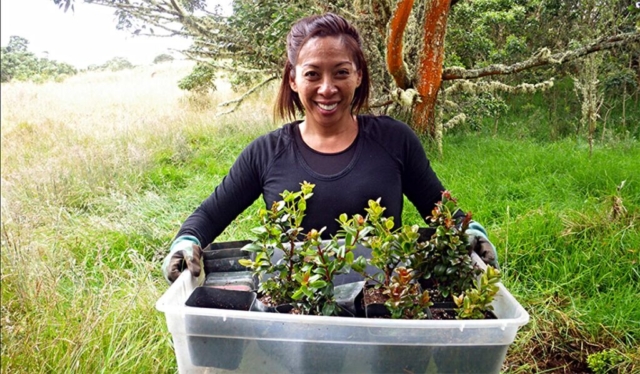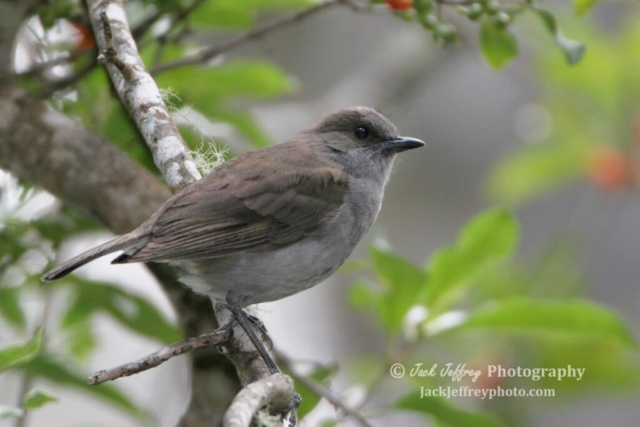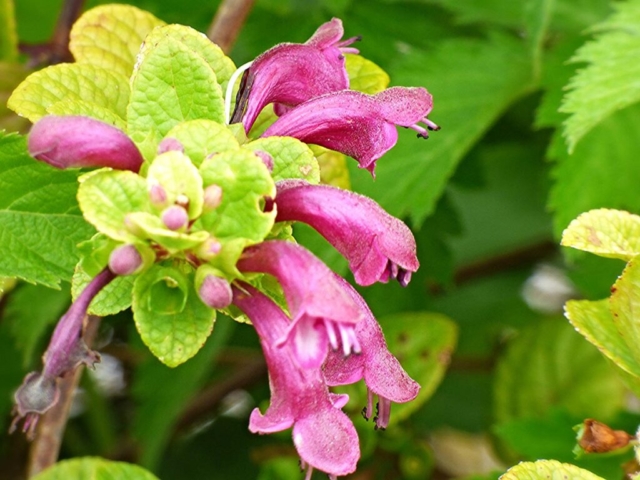Friends of Hakalau Forest National Wildlife Refuge
A nonprofit devoted to conserving the unique flora and fauna of Hawai’i Island

Hakalau Forest National Wildlife Refuge, established in 1985 by the U.S. Fish and Wildlife Service, consists of two distinct parcels. The Hakalau Forest Unit is a 32,830 acre parcel on the windward slopes of Mauna Kea on Hawai’i Island. In 1997 the U.S. Fish and Wildlife Service purchased 5,300 acres south of Kailua-Kona, on the slopes of Mauna Loa, which became the Kona Forest Unit. The Kona Forest Unit has grown to 16,060 acres through acquisitions from McCandless Ranch. The total refuge area of the two units combined is approximately 48,890 acres that are focused on the protection of native Hawaiian forest birds and their forest habitat.
The higher elevation Hakalau Forest Unit contains some of the finest remaining stands of native montane rain forest in Hawai’i and habitat for 29 critically endangered species including seven birds, one insect, one mammal and 20 plants found nowhere else in the world. Currently, it is the only place in Hawai’i where native forest bird populations are stable or increasing.
The lower elevation Kona Forest Unit is predominantly ‘ōhi‘a (Metrosideros polymorpha) trees with an understory of nonnative trees and shrubs and home to a number of endangered birds, plants and one insect. This area was home to the last wild pair of ʻalalā (Corvus hawaiiensis) in 2002. The primary purpose of this unit is to protect, conserve and manage this native forest for threatened or endangered species.
FRIENDS OF HAKALAU FOREST NATIONAL WILDLIFE REFUGE SETS GOAL OF $500,000 FOR
2025 FALL ENDOWMENT CAMPAIGN
2025 is the year of the Hawaii ʻĀkepa.
Endangered Hawaiian birds, including the Hawaiʻi ʻĀkepa, have a future IF we can build the resources to assist in the critical management that must be done to restore and maintain healthy habitat in the Koa-ʻŌhiʻa forests of the Hakalau Forest National Wildlife Refuge (NWR).
Found only on Hawaiʻi Island, the Hawaiʻi ʻĀkepa is one of the islandʻs endangered honeycreepers. This interesting bird has their lower mandible slightly offset to improve foraging efficiency on ʻŌhiʻa leaf clusters. They use their bill to pry open leaves and flower buds looking for small arthropods.
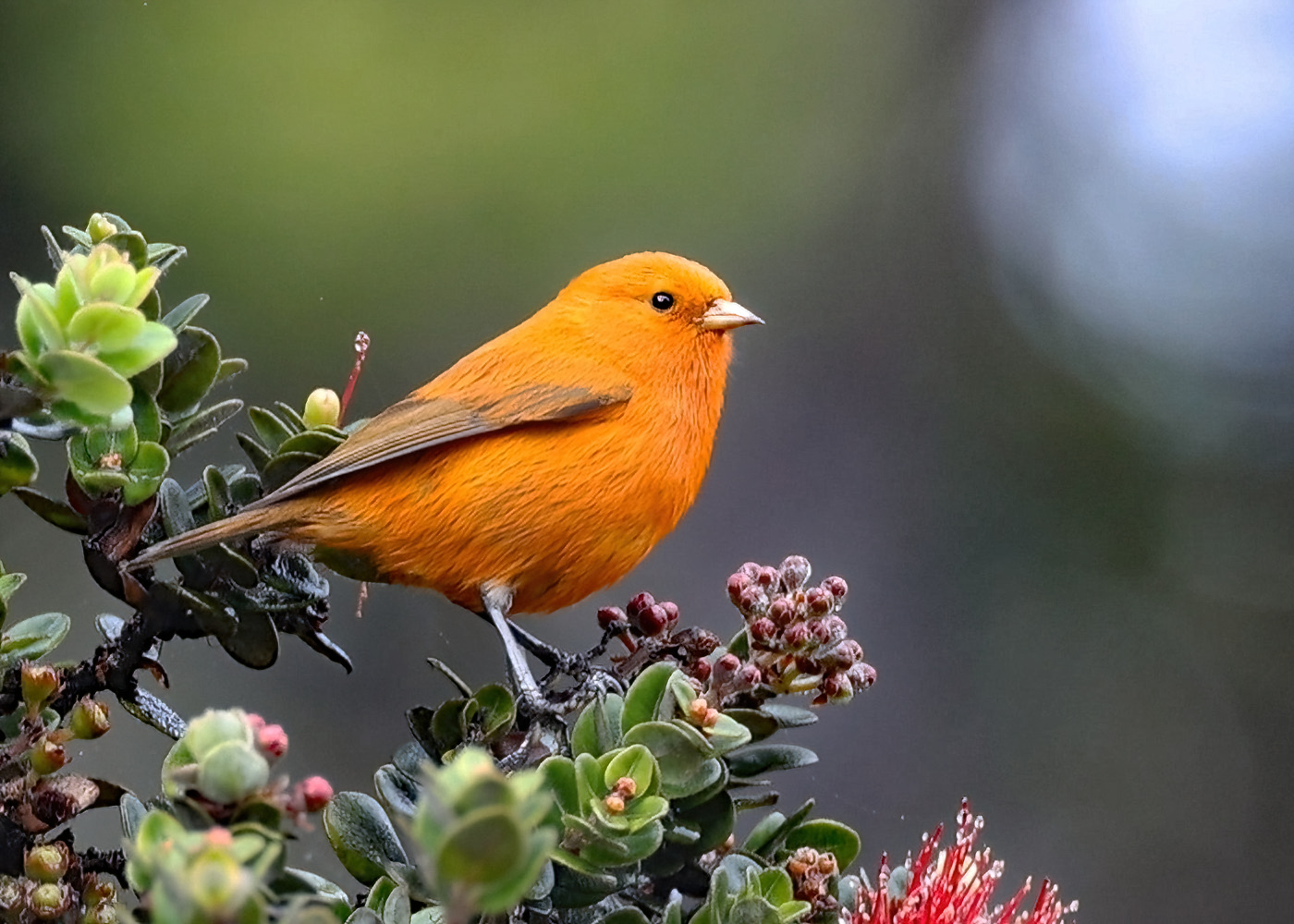
The adult male Hawaiʻi ʻĀkepa is bright orange making it easy to spot in island forests. Hawaiʻi ʻĀkepa are cavity nesters (unusual in Hawaiʻi), finding natural cavities in old growth ʻŌhiʻa and Koa, reminding us of the unique avian treasures found in Hawai’i.
The Friends of Hakalau Forest NWR established an endowment fund in 2015 with the goal of raising $3.5 million. A stable and robust endowment, managed by the Hawaii Community Foundation, is essential to provide a reliable source of funds for the foreseeable future to support the many necessary conservation activities on and around the National Wildlife Refuge.
With your help over the last 10 years, the Endowment has grown very close to $2,200,000. Your gift NOW can help us reach this year’s goal of $2.6 million. Or we can dream of possibly reaching $2.7 million this year!
While ambitious, this goal is possible through the generous donations of our Friends and many other interested parties who see the value in saving endangered Hawaiian birds.
Check out the 2025 Endowment Brochure for more information. Please share widely!
We welcome your contribution to the Endowment (you can donate anonymously if you wish). Please click on the button to access Hawai’i Community Foundation’s secure website
APPLICATIONS NOW OPEN FOR THE
2026 JACK JEFFREY CONSERVATION EDUCATION GRANT PROGRAM
The Friends of Hakalau Forest NWR are happy to announce that we are opening up the application process for a $2,000 award for the 2026 Jack Jeffrey Conservation Education Grant program. Applications are due December 1, 2025. Please click the button below for more details.
For more information about Hakalau Forest NWR, visit:
- The official page of the Hakalau Forest National Wildlife Refuge
- A location map of the Hakalau Forest National Wildlife Refuge
- Topographic basemap of the Hakalau Unit
- Topographic basemap of the Kona Unit
- Hakalau Forest NWR Comprehensive Conservation Plan (2010)
- Frequently Asked Questions about Hakalau Forest National Wildlife Refuge (topics include what is special about Hakalau, six endangered honeycreepers, public access, environmental education, challenges facing the Refuge and the Endowment details)
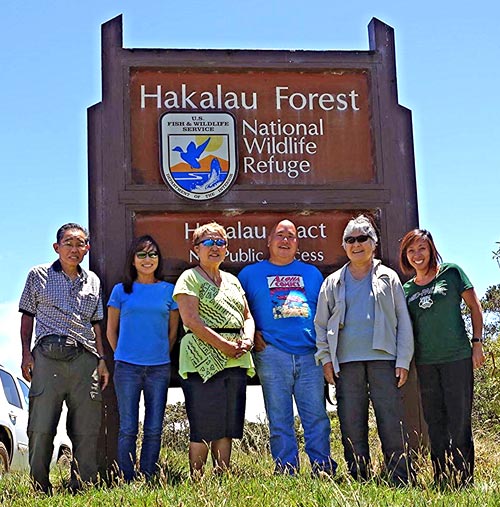
Join

The Friends of Hakalau Forest is a group of hardworking, hands-on committed volunteers and donors who share a passion for supporting the Refuge. When you join the Friends group you become one of nature’s heroes on Hawai’i Island. Feel good about protecting our native forests, and critically endangered birds and plants.
Featured Species

The ‘i‘iwi is the most recognizable bird in the forest, with its scarlet feathers and bright red bill. It is very sensitive to avian malaria, though, and has recently been listed as threatened by the US Fish and Wildlife Service.
©Tim Burr
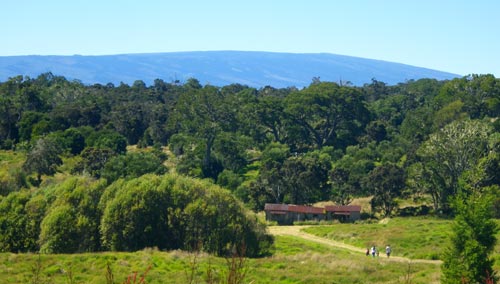
Help establish an endowment to permanently protect the Refuge.
The Friends of Hakalau Forest National Wildlife Refuge sets a goal of $500,000 for the Fall 2025 Endowment Campaign.
Recent Hakalau Forest Research Papers
Quantifying Restoration of Hakalau Forest National Wildlife Refuge, Hawai‘i (1989–2024) Using NDVI and Moisture Indices from Remote Sensing Imagery
Faith A. Nicoll, Elizabeth D. Crook, Peter A. Stine, Thomas Cady, and Michael L. Goulden
Over the past four decades, reforestation of koa trees (Acacia koa) and other native vegetation in Hakalau Forest National Wildlife Refuge (NWR) on Hawai‘i has restored forest areas and helped preserve habitats for endangered endemic species. However, the extent of koa regrowth was not previously quantified. Using Normalized Difference Vegetation Index (NDVI) and Normalized Difference Moisture Index (NDMI) spatial analyses of Landsat, National Agriculture Imagery Program (NAIP), and Sentinel imagery, we classified tree and non-tree areas to estimate forest recovery between 1989 and 2024. Our results suggest approximately 49% koa tree cover has been reestablished in cleared regions. This quantitative assessment of forest growth provides essential data for the management of the refuge, offers spatial tools to track progress toward full forest restoration, and can guide other tropical forest conservation projects.
Hakalau Forest Articles
American Birding Association
Searching for Honey: Sweet Spots on the Big Island of Hawai’i
The latest issue of Birding Magazine from the American Birding Association features an article entitled “Sweet Hotspots on the Big Island of Hawaii.” It includes a nice discussion about the Refuge and some wonderful photos.
Gallery
Photos featured in this gallery are by our talented members. For more photos, visit the Friends of Hakalau Forest NWR Group on Flickr.
